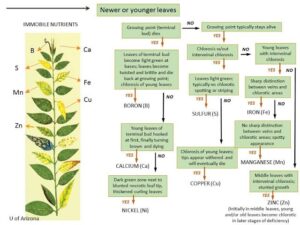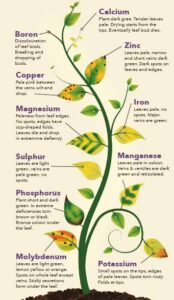Back to: Botany 400 Level
My brilliant Afrilearn scholar, welcome back! I hope you’re doing great today! Have you ever wondered how plants get their nutrients from the soil? Just like we eat food and digest it to absorb nutrients, plants also have a way of taking in the minerals they need from the soil. Today, we’re learning about Soil-Plant Interactions and Nutrient Uptake. By the end of this lesson, you’ll understand how plants and soil work together to support plant growth.
Soil-plant interactions and nutrient uptake
Imagine a farmer planting yam. He prepares the soil, adding manure or fertiliser to enrich it. If the soil is healthy, the yam grows well and produces big tubers. But if the soil lacks nutrients, the yam may not grow properly. This shows that soil and plants interact closely, and these interactions determine how well plants absorb water and nutrients.
Plants depend on the soil for essential nutrients, but they don’t just sit and wait—they actively absorb what they need through their roots. Different soil types affect how easily plants can take up nutrients, and various biological and chemical processes help in nutrient absorption.

Soil-Plant Interactions
The relationship between soil and plants is based on three major factors:
1. Soil Composition
Soil is made up of minerals, organic matter, water, and air.
The type of soil (sandy, loamy, or clayey) affects how much water and nutrients it holds.
Loamy soil is best for plant growth because it retains nutrients while allowing good drainage.
2. Soil pH and Nutrient Availability
The pH (acidity or alkalinity) of soil affects nutrient availability.
Most plants prefer a pH between 5.5 and 7.0 (slightly acidic to neutral).
If the soil is too acidic, nutrients like calcium and magnesium become less available. If it’s too alkaline, nutrients like iron and phosphorus become unavailable.
3. Microorganisms in the Soil
Bacteria, fungi, and earthworms help break down organic matter, releasing nutrients that plants can absorb.
Nitrogen-fixing bacteria (e.g., Rhizobium in legumes) help convert nitrogen in the air into a form that plants can use.
Mycorrhizal fungi attach to plant roots, increasing nutrient and water absorption.
Nutrient Uptake in Plants
Plants absorb nutrients in two major ways:
1. Passive Absorption (By Diffusion and Mass Flow)
Some nutrients, like nitrate (NO₃⁻) and calcium (Ca²⁺), move into plant roots without energy.
Diffusion: Nutrients move from areas of high concentration (soil) to low concentration (roots).
Mass flow: Nutrients move with water as it is absorbed by the roots.
2. Active Absorption (By Energy Use and Carrier Proteins)
Some nutrients, like phosphate (PO₄³⁻) and potassium (K⁺), require energy (ATP) to be absorbed because they move against the concentration gradient.
Carrier proteins in root cells transport these nutrients into the plant.
How Roots Absorb Nutrients
Root hairs play a key role in nutrient uptake. They:
Increase the surface area for water and nutrient absorption.
Release acids that help dissolve minerals in the soil.
Interact with microorganisms like nitrogen-fixing bacteria and mycorrhizal fungi to enhance nutrient uptake.
Water and nutrients enter the plant through two pathways:
Apoplast Pathway: Water and nutrients move through cell walls and spaces between cells.
Symplast Pathway: Water and nutrients pass from cell to cell through plasmodesmata.

Think about a palm tree growing in sandy soil. Since sandy soil drains water quickly, the tree needs deep roots to reach underground water and nutrients. But a plant like cocoyam, which grows in swampy areas, has shallow roots because the soil holds a lot of water and nutrients.
Another example is leguminous plants like beans and groundnuts. They have special bacteria (Rhizobium) in their roots that help them absorb nitrogen from the air. This is why farmers plant them in crop rotation to improve soil fertility.
Summary
Soil and plants interact through soil composition, pH, and microorganisms.
Plants absorb nutrients passively (diffusion, mass flow) or actively (using energy).
Root hairs and mycorrhizal fungi help plants absorb more nutrients.
Loamy soil is the best for plant growth, while extreme soil pH affects nutrient availability.
Understanding soil-plant interactions helps farmers improve crop yields by using the right soil management techniques.
Evaluation
- Why is soil pH important for plant nutrient uptake?
- Explain the difference between passive and active nutrient absorption.
- What role do microorganisms play in plant nutrient uptake?
- Why do legumes grow well in poor soils?
Keep learning, my scholar! Just like plants need nutrients to grow, you need knowledge to succeed. Keep nourishing your mind, and soon, you’ll be a master in plant physiology! See you in the next lesson—keep shining!
